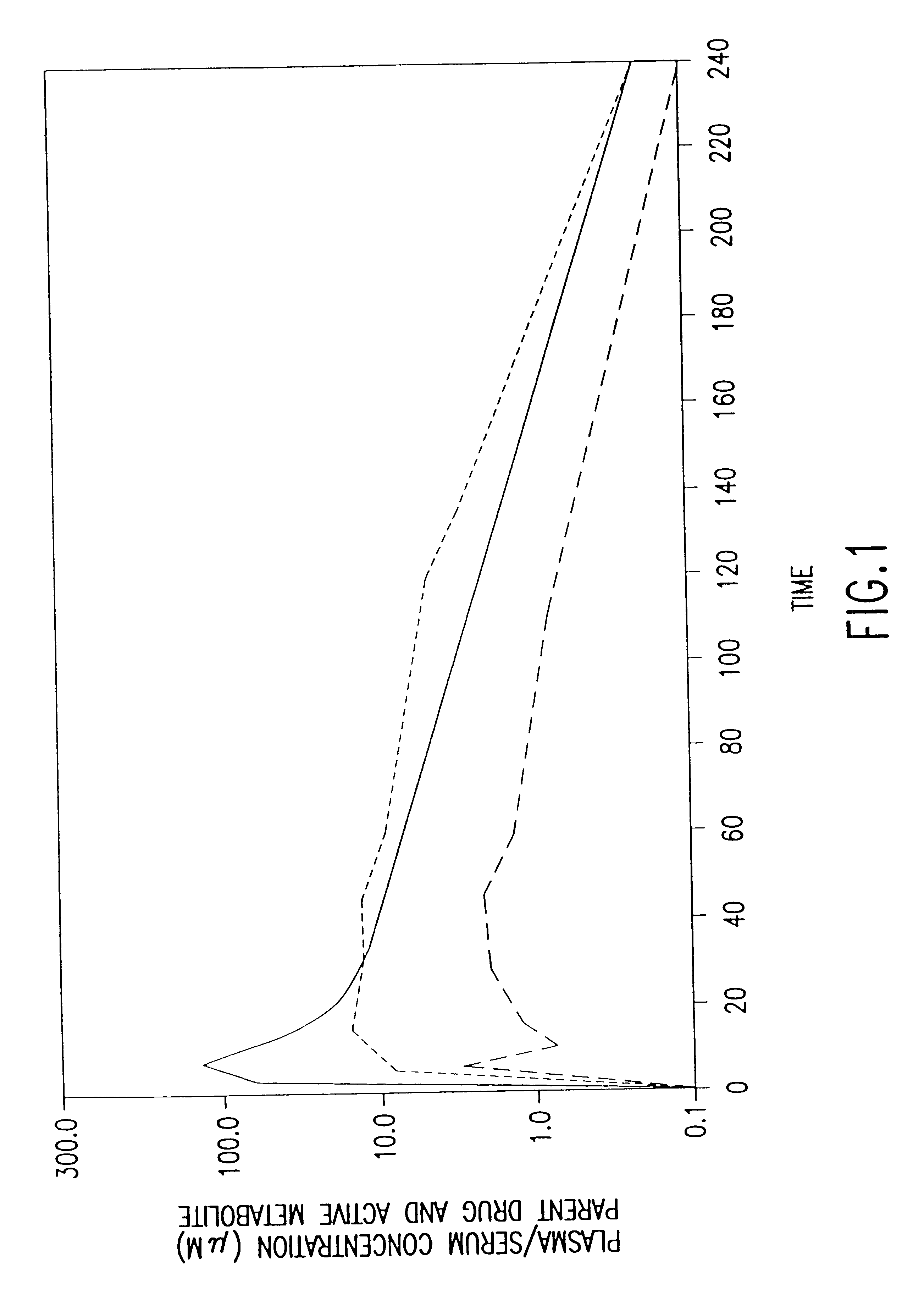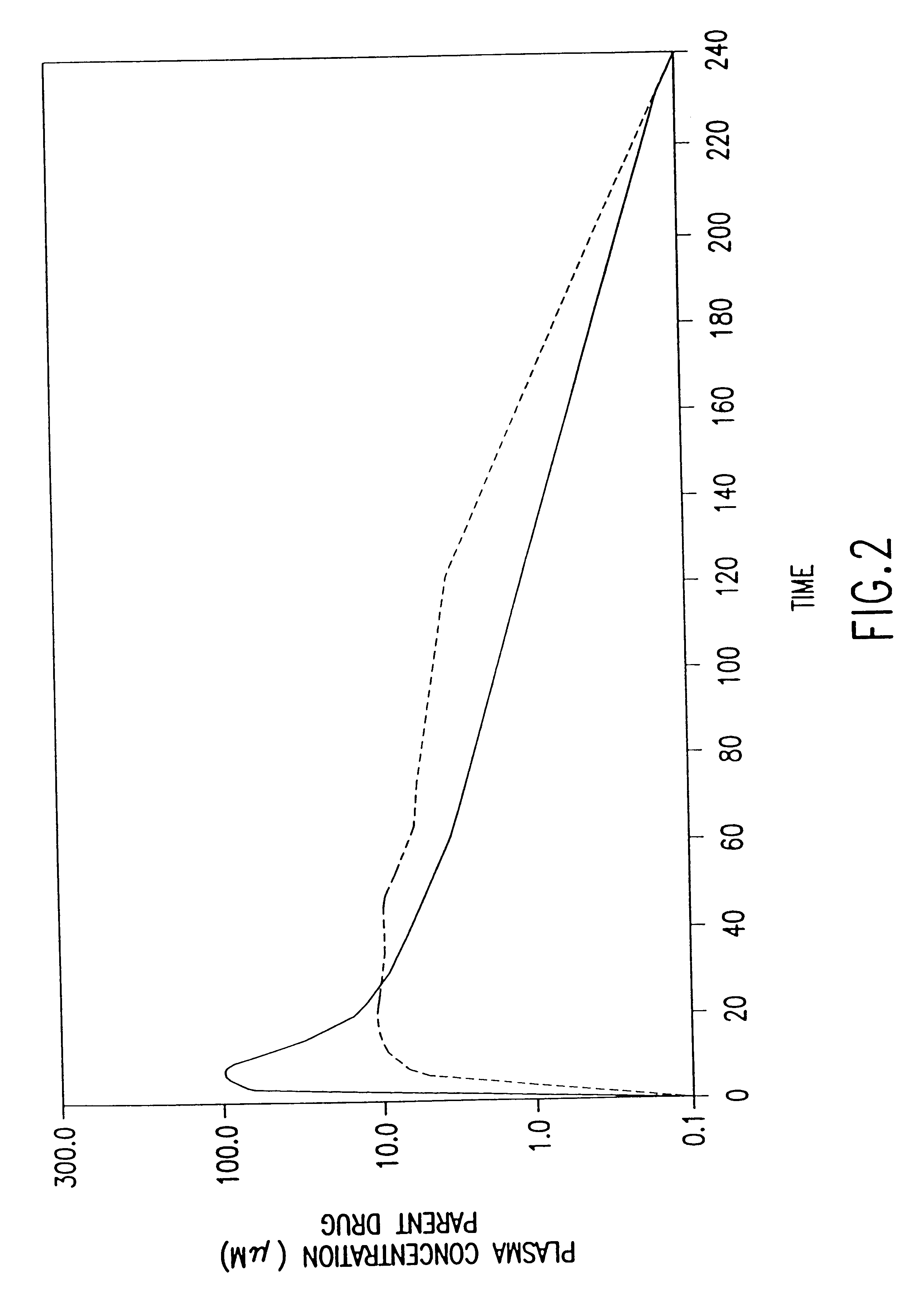Methods for the administration of amifostine and related compounds
a technology of amifostine and related compounds, which is applied in the directions of anti-noxious agents, inorganic non-active ingredients, phosphorous compound active ingredients, etc., can solve the problems of nausea, vomiting, and nausea of patients with dose-dependent undesirable side effects,
- Summary
- Abstract
- Description
- Claims
- Application Information
AI Technical Summary
Benefits of technology
Problems solved by technology
Method used
Image
Examples
Embodiment Construction
The present invention provides methods of administering aminoalkyl phosphorothioate and / or aminoalkyl thiol compounds to patients in a manner which decreases the undesirable side effects of the compounds as compared to conventional intravenous administration. The invention is based, in part, on the quite unexpected discovery that human patients receiving subcutaneously administered amifostine experienced significantly fewer incidences of nausea, vomiting, headache, hypotension, lightheadness, somnolence and other undesirable side effects commonly associated with conventional intravenous administration of amifostine than did patients who received amifostine via conventional intravenous infusion. These side effects coincide with the "spike" or "burst" phase of the pharmacokinetic profile of intravenously administered drug.
The invention is further based, in part, on the observation that the pharmacokinetic profiles of amifostine and its active metabolite WR-1065 for intravenously and s...
PUM
| Property | Measurement | Unit |
|---|---|---|
| concentration | aaaaa | aaaaa |
| systolic blood pressure | aaaaa | aaaaa |
| volume | aaaaa | aaaaa |
Abstract
Description
Claims
Application Information
 Login to View More
Login to View More - R&D
- Intellectual Property
- Life Sciences
- Materials
- Tech Scout
- Unparalleled Data Quality
- Higher Quality Content
- 60% Fewer Hallucinations
Browse by: Latest US Patents, China's latest patents, Technical Efficacy Thesaurus, Application Domain, Technology Topic, Popular Technical Reports.
© 2025 PatSnap. All rights reserved.Legal|Privacy policy|Modern Slavery Act Transparency Statement|Sitemap|About US| Contact US: help@patsnap.com



